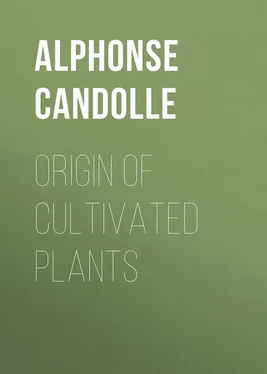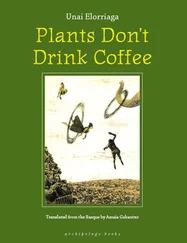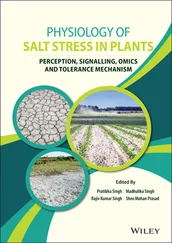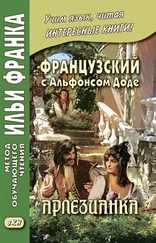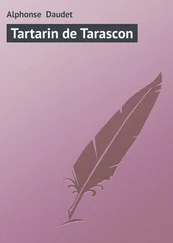Alphonse Candolle - Origin of Cultivated Plants
Здесь есть возможность читать онлайн «Alphonse Candolle - Origin of Cultivated Plants» — ознакомительный отрывок электронной книги совершенно бесплатно, а после прочтения отрывка купить полную версию. В некоторых случаях можно слушать аудио, скачать через торрент в формате fb2 и присутствует краткое содержание. Жанр: foreign_antique, foreign_prose, на английском языке. Описание произведения, (предисловие) а так же отзывы посетителей доступны на портале библиотеки ЛибКат.
- Название:Origin of Cultivated Plants
- Автор:
- Жанр:
- Год:неизвестен
- ISBN:нет данных
- Рейтинг книги:4 / 5. Голосов: 1
-
Избранное:Добавить в избранное
- Отзывы:
-
Ваша оценка:
- 80
- 1
- 2
- 3
- 4
- 5
Origin of Cultivated Plants: краткое содержание, описание и аннотация
Предлагаем к чтению аннотацию, описание, краткое содержание или предисловие (зависит от того, что написал сам автор книги «Origin of Cultivated Plants»). Если вы не нашли необходимую информацию о книге — напишите в комментариях, мы постараемся отыскать её.
Origin of Cultivated Plants — читать онлайн ознакомительный отрывок
Ниже представлен текст книги, разбитый по страницам. Система сохранения места последней прочитанной страницы, позволяет с удобством читать онлайн бесплатно книгу «Origin of Cultivated Plants», без необходимости каждый раз заново искать на чём Вы остановились. Поставьте закладку, и сможете в любой момент перейти на страницу, на которой закончили чтение.
Интервал:
Закладка:
A totally different opinion exists on the latter point, which we must also examine. Several botanists 40 40 Webb, Phytogr. Canar. , p. 83; Iter. Hisp. , p. 71; Bentham, Fl. Hong Kong , p. 17; Hooker, Fl. Brit. Ind. , i. p. 166.
suspect that Raphanus sativus is simply a particular condition, with enlarged root and non-articulated fruit, of Raphanus raphanistrum , a very common plant in the temperate cultivated districts of Europe and Asia, and which is also found in a wild state in sand and light soil near the sea – for instance, at St. Sebastian, in Dalmatia, and at Trebizond. 41 41 Willkomm and Lange, Prod. Fl. Hisp. , iii. p. 748; Viviani, Flor. Dalmat. , iii. p. 104; Boissier, Fl. Orient. , i. p. 401.
Its usual haunts are in deserted fields; and many common names which signify wild radish, show the affinity of the two plants. I should not insist upon this point if their supposed identity were a mere presumption, but it rests upon experiments and observations which it is important to know.
In R. raphanistrum the siliqua is articulated, that is to say, contracted at intervals, and the seeds placed each in a division. In R. sativus the siliqua is continuous, and forms a single cavity. Some botanists had made this difference the basis of two distinct genera, Raphanistrum and Raphanus . But three accurate observers, Webb, Gay, and Spach, have noticed among plants of Raphanus sativus , raised from the same seed, both unilocular and articulated pods, some of them bilocular, others plurilocular. Webb 42 42 Webb, Phytographia Canariensis , i. p. 83.
arrived at the same results when he afterwards repeated these experiments, and he observed yet another fact of some importance: the radish which sows itself by chance, and is not cultivated, produced the siliquæ of Raphanistrum . 43 43 Webb, Iter. Hispaniense , 1838, p. 72.
Another difference between the two plants is in the root, fleshy in R. sativus , slender in R. raphanistrum ; but this changes with cultivation, as appears from the experiments of Carrière, the head gardener of the nurseries of the Natural History Museum in Paris. 44 44 Carrière, Origine des Plantes Domestiques démontrée par la Culture du Radis Sauvage , in 8vo, 24 pp., 1869.
It occurred to him to sow the seeds of the slender-rooted Raphanistrum in both stiff and light soil, and in the fourth generation he obtained fleshy radishes, of varied colour and form like those of our gardens. He even gives the figures, which are really curious and conclusive. The pungent taste of the radish was not wanting. To obtain these changes, Carrière sowed in September, so as to make the plant almost biennial instead of annual. The thickening of the root was the natural result, since many biennial plants have fleshy roots.
The inverse experiment remains to be tried – to sow cultivated radishes in a poor soil. Probably the roots would become poorer and poorer, while the siliquæ would become more and more articulated.
From all the experiments I have mentioned, Raphanus sativus might well be a variety of R. raphanistrum , an unstable variety determined by the existence of several generations in a fertile soil. We cannot suppose that ancient uncivilized peoples made essays like those of Carrière, but they may have noticed plants of Raphanistrum grown in richly manured soil, with more or less fleshy roots; and this soon suggested the idea of cultivating them.
I have, however, one objection to make, founded on geographical botany. Raphanus raphanistrum is a European plant which does not exist in Asia. 45 45 Ledebour, Fl. Ross. ; Boissier, Fl. Orient. Works on the flora of the valley of the Amur.
It cannot, therefore, be this species that has furnished the inhabitants of India, China, and Japan with the radishes which they have cultivated for centuries. On the other hand, how could R. raphanistrum , which is supposed to have been modified in Europe, have been transmitted in ancient times across the whole of Asia? The transport of cultivated plants has commonly proceeded from Asia into Europe. Chang-Kien certainly brought vegetables from Bactriana into China in the second century B.C., but the radish is not named among the number.
Horse-radish— Cochlearia Armoracia , Linnæus.
This Crucifer, whose rather hard root has the taste of mustard, was sometimes called in French cran , or cranson de Bretagne . This was an error caused by the old botanical name Armoracia , which was taken for a corruption of Armorica (Brittany). Armoracia occurs in Pliny, and was applied to a crucifer of the Pontine province, which was perhaps Raphanus sativus. After I had formerly 46 46 A. de Candolle, Géographie Botanique Raisonnée , p. 654.
pointed out this confusion, I expressed myself as follows on the mistaken origin of the species: — Cochlearia Armoracia is not wild in Brittany, a fact now established by the researches of botanists in the west of France. The Abbé Delalande mentions it in his little work, entitled Hœdic et Houat , 47 47 Delalande, Hœdic et Houat , 8vo pamphlet, Nantes, 1850, p. 109.
in which he gives so interesting an account of the customs and productions of these two little islands of Brittany. He quotes the opinion of M. le Gall, who, in an unpublished flora of Morbihan, declares the plant foreign to Brittany. This proof, however, is less strong than others, since the south coast of the peninsula of Brittany is not yet sufficiently known to botanists, and the ancient Armorica extended over a portion of Normandy where the wild horse-radish is now found. 48 48 Hardouin, Renou, and Leclerc, Catalogue du Calvados , p. 85; De Brebisson, Fl. de Normandie , p. 25.
This leads me to speak of the original home of the species. English botanists mention it as wild in Great Britain, but are doubtful about its origin. Watson 49 49 Watson, Cybele , i. p. 159.
considers it as introduced by cultivation. The difficulty of extirpating it, he says, from places where it is cultivated, is well known to gardeners. It is therefore not surprising that this plant should take possession of waste ground, and persist there so as to appear indigenous. Babington 50 50 Babington, Manual of Brit. Bot. , 2nd edit., p. 28.
mentions only one spot where the species appears to be really wild, namely, Swansea. We will try to solve the problem by further arguments.
Cochlearia Armoracia is a plant belonging to the temperate, and especially to the eastern regions of Europe. It is diffused from Finland to Astrakhan, and to the desert of Cuman. 51 51 Ledebour, Fl. Ross. , i. p. 159.
Grisebach mentions also several localities in Turkey in Europe, near Enos, for instance, where it abounds on the sea-shore. 52 52 Grisebach, Spicilegium Fl. Rumel. , i. p. 265.
The further we advance towards the west of Europe, the less the authors of floras appear sure that the plant is indigenous, and the localities assigned to it are more scattered and doubtful. The species is rarer in Norway than in Sweden, 53 53 Fries, Summa , p. 30.
in the British Isles than in Holland, where a foreign origin is not attributed to it. 54 54 Miquel, Disquisitio pl. regn. Batav.
The specific names confirm the impression of its origin in the east rather than in the west of Europe; thus the name chren 55 55 Moritzi, Dict. Inéd. des Noms Vulgaires .
in Russia recurs in all the Sclavonic languages, krenai in Lithuanian, chren in Illyrian, 56 56 Moritzi, ibid. ; Viviani, Fl. Dalmat. , iii. p. 322.
etc. It has introduced itself into a few German dialects, round Vienna, 57 57 Neilreich, Fl. Wien , p. 502.
for instance, where it persists, in spite of the spread of the German tongue. We owe to it also the French names cran or cranson . The word used in Germany, Meerretig , and in Holland, meer-radys , whence the Italian Swiss dialect has taken the name méridi , or mérédi , means sea-radish, and is not primitive like the word chren . It comes probably from the fact that the plant grows well near the sea, a circumstance common to many of the Cruciferæ , and which should be the case with this species, for it is wild in the east of Russia where there is a good deal of salt soil. The Swedish name peppar-rot 58 58 Linnæus, Fl. Suecica , No. 540.
suggests the idea that the species came into Sweden later than the introduction of pepper by commerce into the north of Europe. However, the name may have taken the place of an older one, which has remained unknown to us. The English name of horse-radish is not of such an original nature as to lead to a belief in the existence of the species in the country before the Saxon conquest. It means a very strong radish. The Welsh name rhuddygl maurth 59 59 H. Davies, Welsh Botanology , p. 63.
is only the translation of the English word, whence we may infer that the Kelts of Great Britain had no special name, and were not acquainted with the species. In the west of France, the name raifort , which is the commonest, merely means strong root. Formerly it bore in France the names of German, or Capuchin mustard, which shows a foreign and recent origin. On the contrary, the word chren is in all the Sclavonic languages, a word which has penetrated into some German and French dialects under the forms of kreen , cran , and cranson , and which is certainly of a primitive nature, and shows the antiquity of the species in temperate Eastern Europe. It is therefore most probable that cultivation has propagated and naturalized the plant westward from the east for about a thousand years.
Интервал:
Закладка:
Похожие книги на «Origin of Cultivated Plants»
Представляем Вашему вниманию похожие книги на «Origin of Cultivated Plants» списком для выбора. Мы отобрали схожую по названию и смыслу литературу в надежде предоставить читателям больше вариантов отыскать новые, интересные, ещё непрочитанные произведения.
Обсуждение, отзывы о книге «Origin of Cultivated Plants» и просто собственные мнения читателей. Оставьте ваши комментарии, напишите, что Вы думаете о произведении, его смысле или главных героях. Укажите что конкретно понравилось, а что нет, и почему Вы так считаете.
